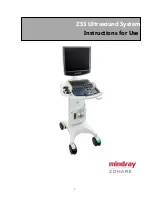
3
waRning:
A) Never use an ascender which is damaged, warped, shows sign of excessive loading, or where cams and latches
are damaged, sticking or functioning improperly. An ascender that appears to be damaged or does not function
properly should be taken out of service. Where there is concern regarding the condition of the ascender, it must be
withdrawn from service. Contact the manufacturer for assistance.
B) Never use an ascender with the cam latch in the open position or unlocked.
C) When preparing to use the ascender, care should be taken to ensure that the ascender is not overloaded and use is
contained within a suitable working load limit (wll). Wll is determined by the user, local emergency agencies/policies
and standards. Typical wll ratios are between 5:1 and 15:1 (working load limit to minimum breaking 13 strength).
The minimum breaking strength is marked on the ascender. Typically the weak link when using an ascender is the
rope which may break at loads of 600 kg and higher depending upon rope size and construction. The “maximum
load at cam” as marked on the ascender represents the minimum breaking strength of the rope within the device
under load.
D) Always ensure loads on the ascender are placed in the direction of the attached rope. Placing side loads on the
ascender such as on a leading edge may result in the ascender being damaged, failing to operate correctly or
releasing its load completely.
E) The use of ascenders in a positioning, rescue/retrieval or hauling system relies on the compatibility of the
various components of the system. Users must be aware of how each component of the system works with other
components to ensure safe operations.
Capital Safety recommends that proper training is undertaken by the user to ensure that ascenders are attached
and used correctly.
3.16 aid cliMBinG: Ascending with two ascenders (hand and chest).
Rollgliss™ Explorer™ Ascenders are designed and tested as mountaineering rope grabs under EN 567, and as auxiliary
equipment under NFPA 1983, to provide a positive attachment point to a rope for the purpose of aid climbing. The
following description is for the ascent of a vertical or near vertical rope. It is important to caution that the use of two
attachment points on the single main line (hand and chest ascenders) does not replace the need for a secondary fall
arrest system.
1. attach ascenders
step 1.
Attach the chest ascender to the rope using the steps in Section 3.15 of this instruction.
step 2.
Attach a Rollgliss™ foot loop/etrier and backup lanyard to the hand ascender. The foot loop/etrier should
be attached to the primary rigging point with the backup lanyard attached to the secondary rigging point.
Attach the backup lanyard to a suitable attachment point on the user’s harness.
step 3.
Attach the hand ascender on the main line (support rope) above the user’s chest ascender. Confirm that the
ascenders are attached to the rope by following the steps in Section 3.15 of this instruction.
step 4.
Test the ascenders to confirm that they have been threaded correctly and that they are working properly.
An ascender should be able to support the user’s weight without slipping.
note:
Do not use ascenders as either a chest or hand ascender which have no locking catch or where the locking
mechanism is damaged.
2. ascending
step 1.
Shift user body weight to the chest ascender so that the user is supported by the chest ascender and the
user’s feet are not carrying any weight.
step 2.
Place user’s feet in foot loops, keeping knees bent and feet directly below buttocks.
step 3.
Straighten legs, standing up into the foot loops. The user’s chest ascender should move up the rope
automatically, if not gently pull the rope through the chest ascender;
step 4.
Shift user’s weight from foot loops to the chest ascender. User’s weight should now be fully supported on
user’s chest ascender while sitting in the harness.
step 5.
Move user’s hand ascender up the rope, at the same time moving legs into a crouching position to allow the
hand ascender to move. Repeat steps 2 through 5 until the destination is reached.
3. descending
The user can make short descents using Rollgliss™ Explorer™ Ascenders.
note:
Always use two ascenders (hand and chest) when descending. Move each ascender down in short movements
of approx 100mm - 150mm (4 in - 6 in) each. Take care not to drop into/impact any ascender.
With a chest ascender already attached to the user’s harness and the main line, and a hand ascender with foot
loops/etrier attached to the main line above the chest ascender:
step 1.
Shift user body weight to the chest ascender so that the user is supported by the chest ascender and the
user’s feet are not carrying any weight.
step 2.
Place user’s feet in foot loops, keeping knees bent and feet directly below buttocks.
step 3.
Straighten legs, standing up into the foot loops. The user’s chest ascender should move up the rope
automatically releasing pressure on the chest ascender cam.
step 4.
Using a finger, push the cam down on the chest ascender as far as possible. When the cam is pushed down,
the rope can run freely through the ascender because the cam is disengaged. The rope cannot come out of
the ascender because the cam is prevented from opening by the latch.


































